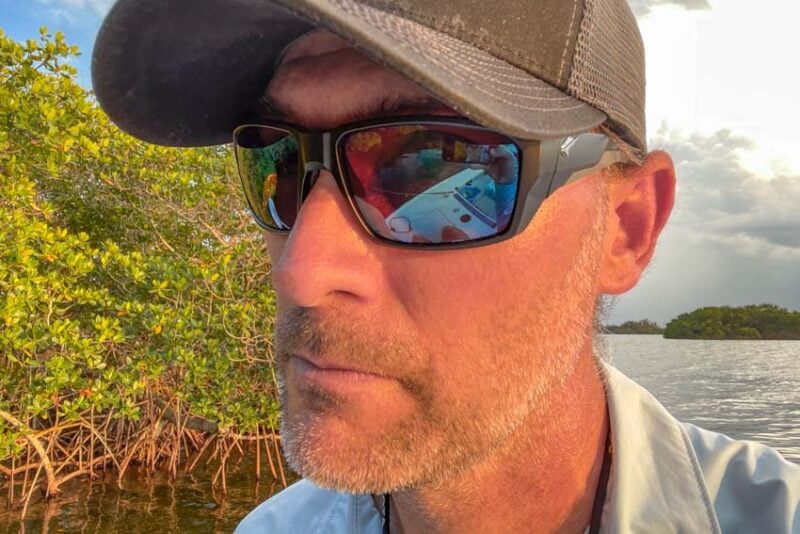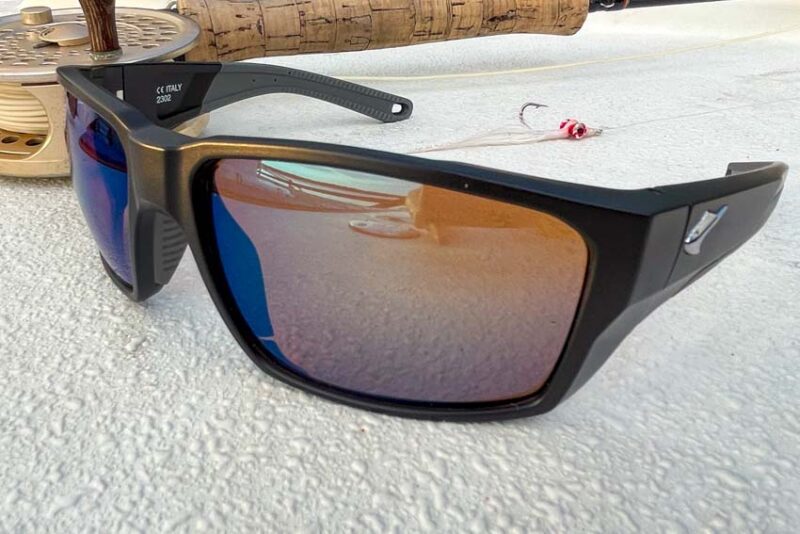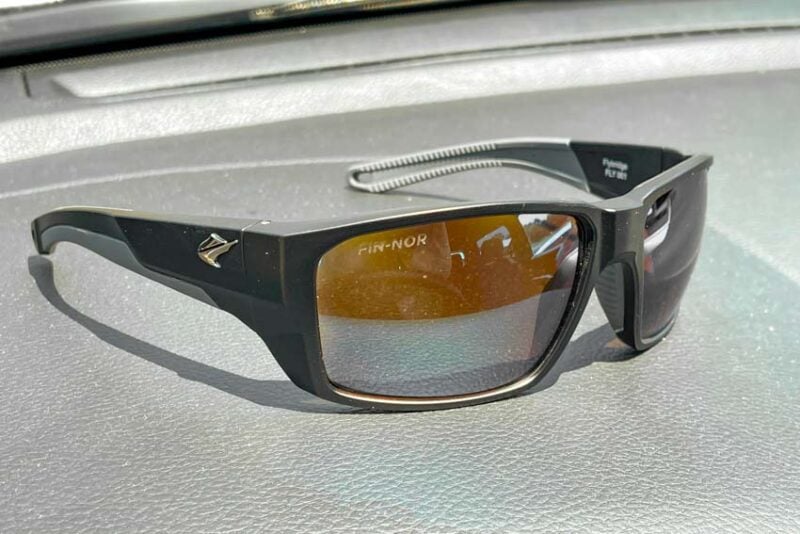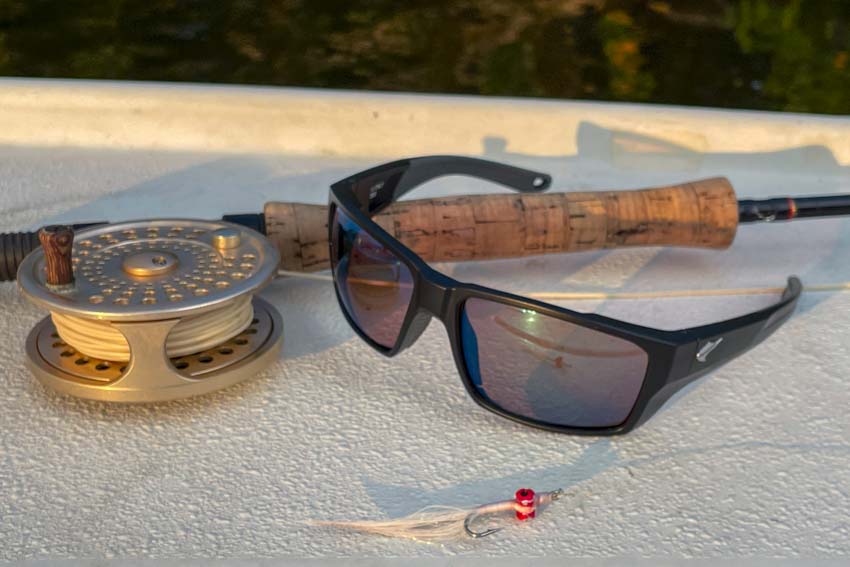As the saying goes, you can’t say you fished all day if you don’t start first thing in the morning. To help you target fish in the early morning and late evening, the Fin-Nor Lateral Line L4 Low-Light Lens is now available. But is it worth carrying an extra set of sunglasses? I put my eyes behind a pair and took the boat out to Tampa Bay to find out.
Fin-Nor Lateral Line L4 Low-Light Lens Sunglasses
Making the Case for a Low-Light Lens

Days on Tampa Bay can be long. You’re on the water at sunup or earlier to find bait and get to your first spot. Then it’s a matter of following the fish with the tide. With the unusual mixture of grass flats, mangrove lines, beaches, bridges, and deep shipping channels, something is biting somewhere all day and all night. My go-to sunglasses have 12% light transmission, so during the first and last hour of light, they’re not particularly useful.
At first, I wasn’t crazy about the idea of carrying two pairs of glasses. But since I keep my spare gear in a Yeti Loadout, I could keep one protected while wearing the other. On this day, I only had a few hours in the late afternoon to fish, so I grabbed a couple of fly rods and headed out to see if the L4 lenses could help me keep an eye open for redfish and snook as the run went down.
Design

Low-light lenses aren’t a new thing. What Fin-Nor does differently with the L4 Low-Light Lens is targeting maximum visual light transmission while maintaining 100% polarization and outstanding clarity.
The L4 is built from a polycarbonate foundation using a high-contrast copper lite lens base with a blue mirror. While the clarity isn’t quite as crisp as glass lenses, it is still remarkable compared to other brands you might pick up. Of course, polycarbonate also has the benefits of being lighter and more impact-resistant.
Both sides of the lens get oleophobic (smudge-resisting) and hydrophobic (water-resisting) coatings along with a 5-layer anti-reflective coating on the backside. As you would expect, the lens also offers outstanding UV protection.
The result is higher contrast and high light transmission while avoiding color distortion, reducing glare, blocking blue light, and lightening up shadows. All of this is specifically dialed in to work best when there’s little light to work with.
Not only was I able to cut through the sunset glare to see my targets, but these lenses also made running safer. I was fishing the Little Manatee River mouth and heading back in, there were plenty of shoals to keep an eye out for. Fin-Nor’s L4 lenses made the light-colored sand pop against the tea-colored river water despite the low light levels and helped me navigate through the twists and turns easily.
Fin-Nor Lateral Line L4 Low-Light Lens Sunglasses Price

You can get the L4 as an option on eight of Fin-Nor’s sunglasses with the initial launch. As we mentioned before, they’re only available as a polycarbonate lens.
- Popper: $199
- Big Pine: $199
- Bouncer: $209
- Flybridge (shown in the photos): $209
- Hells Bay: $219
- Rum Line: $219
- 12/0: $209
- Tilloo: $209
The Bottom Line
Learning about the tech behind the design, Fin-Nor’s lens concept makes sense. But does the real-world use back up the claims? Absolutely. The difference in what I can see in the early morning and late evening is, well, night and day. It’s not just during those hours, though. When heavy cloud cover rolls in, you should switch to these lenses as well. If you’re serious about keeping up your A-game from sunup to sundown, you should have a pair of Fin-Nor sunglasses with Lateral Line L4 Low-Light Lenses on your boat every trip.



